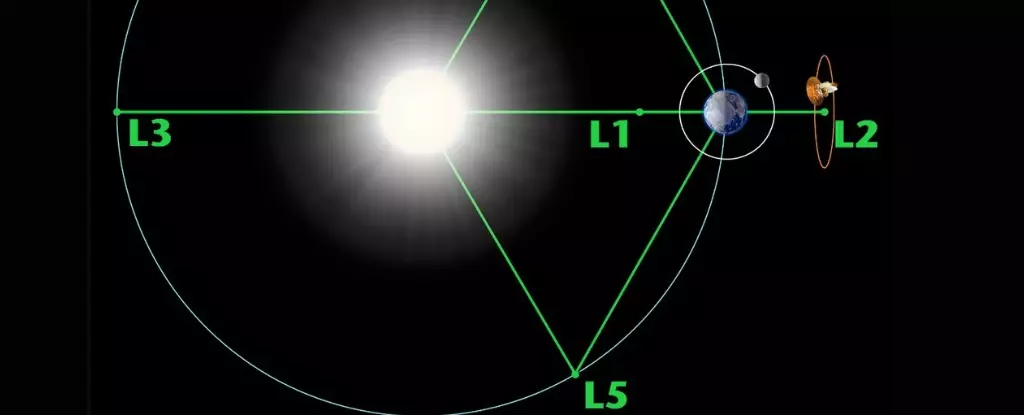The quest for space dominance has ignited a new “space race” between the United States and China, with Lagrange points emerging as a critical battleground. These points, named after astronomer Joseph-Louis Lagrange, are locations in interplanetary space where the gravitational pull of two celestial bodies creates a balance with the centripetal force required for a smaller object to orbit steadily between them. In the Sun and Earth-Moon system, there are five Lagrange points, denoted as L1 to L5, which result from this unique interplay of gravity.
Of particular interest are Lagrange points L4 and L5, situated at fixed positions 60 degrees ahead and behind Earth (including the Moon) along its orbital path around the Sun. These points offer remarkable stability, making them ideal “parking” spots for satellites and telescopes. Spacecraft stationed at L4 and L5 can remain in position for extended periods without expending significant amounts of fuel to maintain their orbits. The vantage point they provide offers a continuous view of Earth, its natural satellite, and an ideal location for observing weather patterns on our planet.
Moreover, the absence of atmospheric interference and the proximity of Lagrange points L1 and L2 to the Moon make them equally desirable for satellite deployment. Controlling these strategic positions grants a significant advantage in space research, communications, and surveillance. From the perspective of the Sun, L2 is positioned 1.5 million kilometers (932,000 miles) behind Earth. It orbits the Sun at the same speed as Earth but at approximately four times the distance from us as the Moon.
Both the United States and China recognize the value of Lagrange points in their pursuit of space dominance. China has already taken a significant step by sending the Queqiao relay satellite to L2 in the Earth-Moon system, enabling communication with the Chang’e 4 lunar probe, the first spacecraft to land on the far side of the Moon. Meanwhile, the United States has its sights set on L2 as well, with plans for missions like the Gateway lunar outpost.
The uniqueness of L2 lies in its unobstructed view of deep space from the perspective of Earth. This makes it an ideal location for sensitive telescopes, such as the James Webb Space Telescope (JWST). The enhanced visibility to the far side of the Moon from L2 is a crucial aspect for future lunar exploration. As space systems engineer Laura Duffy highlighted, “We cannot see that from the Earth, and China is headed there.”
The Call for Action: Space Dominance
The intensifying economic and technological rivalry between the United States and China has prompted a bipartisan committee within the House of Representatives to issue a report aimed at resetting the relationship and countering China’s ambitions. The report recommends robust funding for NASA and the Department of Defense to establish dominance in multilateral space governance and foster scientific discovery and innovation.
One recommendation in the report stands out – the United States should be the first country to permanently station assets at all Lagrange Points to counter China’s malign ambitions in space. This acknowledgment underscores the critical importance of Lagrange points in the battle for space supremacy.
While the competition between the United States and China intensifies, it is worth noting that collaboration also plays a significant role in advancing our understanding of the universe. The International Space Station, for example, involves cooperation between various countries and continues to push the boundaries of space exploration.
Beyond the rivalry between these two nations, other countries are also eyeing Lagrange points for their strategic significance. The European Space Agency is actively developing its own missions to these locations, emphasizing the international community’s interest in these unique regions of space.
A Future Yet to Unfold
The focus on Lagrange points in the new era of the space race raises both intrigue and concern. As nations vie for dominance, these points offer stepping stones not only for deep-space exploration but also for future missions to Mars and beyond. However, the exploitation of Lagrange points for strategic advantages may have unanticipated consequences and impact international collaboration in space exploration.
The battle for Lagrange points signifies a shift in the pursuit of space exploration. With the United States and China spearheading the race, the strategic significance of these locations cannot be overstated. As technology and ambitions propel us forward, it will be fascinating to witness how Lagrange points are harnessed to push the boundaries of exploration and maintain the delicate balance between competition and collaboration in the vastness of space.



Leave a Reply